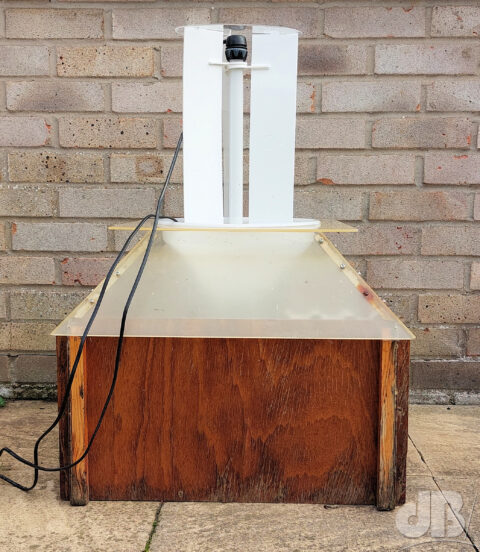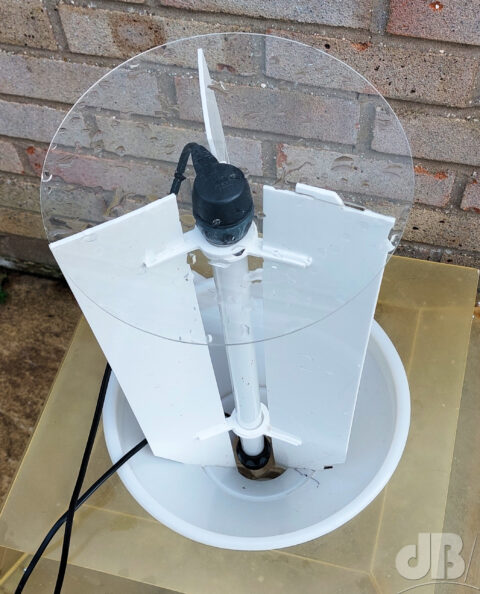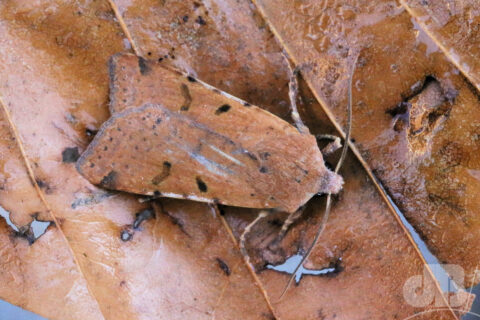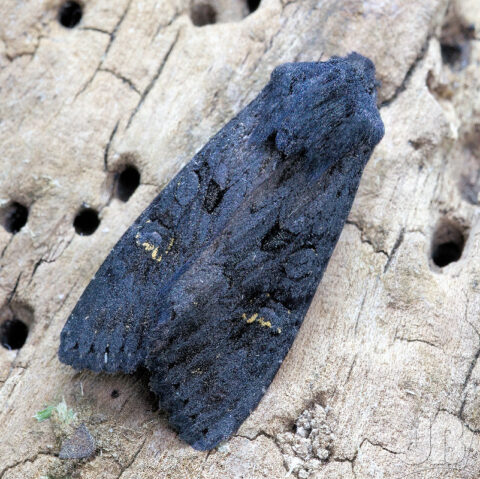I’ve had to hack my moth trap, or more specifically, I’ve had to hack my two moth traps.
The white, plastic vanes are broken on my original moth trap (the collapsible wooden one bought from an ex-mother and cabinet maker friend mentioned here years ago). The UV U-tube also failed in the night a week or so ago, So, having previously also acquired a spare moth trap from yet another friend in the village who is also an ex-mother, I have now hybridised the original box and funnel with the vanes and UV tube from the second trap. The U-tubes were 40 Watts, the linear bulb is just 20 Watts, so will be half the electricity cost on lighting-up sessions (although not as cheap to run as the 1 Watt LepiLED, good success with that on a couple of field trips).

As you can see, the Perspex shoulders of the box have clouded over a lot since I acquired the original trap and I ought to replace those. The point of having a transparent upper is so that plenty of light from the lamp gets into the box so that the moths don’t simply head for the exit hole once they’re in the box. As regular readers will know, the box is filled with egg trays to give the moths somewhere to roost overnight until they’re logged, photographed and safely released the next day.

There are at least seven mothers in our village, although only four of us are currently active, I believe. Three are definitely ex-mothers. I have the old traps of two of them and the third disposed of her trap for ethical reasons, although I think having people trap for scientific purposes is more ethical than not knowing anything about the local moths. We are a big village, very long, flanked by farmland and some trees. So, for the County Moth Recorder, it is useful to have records from across the patch and the area is big enough that individual trapping is very unlikely to disturb moth populations and biology in any significant way.

Anyway, it’s mid-October and last night was wet but brought in a fair number of moths, more than the previous session with the now-defunct 40W kit: Beaded Chestnut 3, Black Rustic 2, Box-tree Moth 1, Light Brown Apple Moth 4, Lesser Yellow Underwing 1, Large Yellow Underwing 3,
Red-line Quaker 2, Shuttle-shaped Dart 1, Strawberry Tortrix 2, Vine’s Rustic 1, White-point 1.
